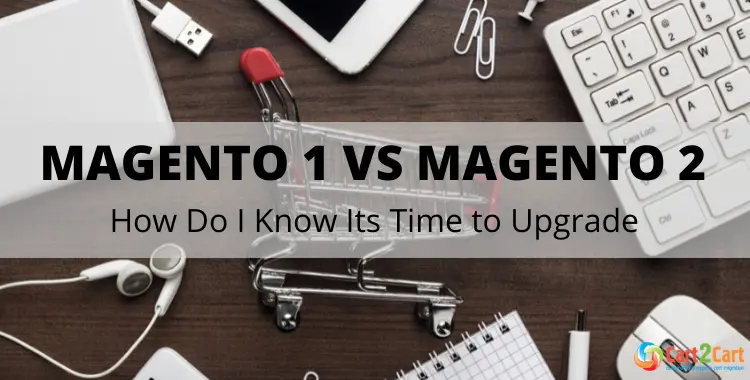
The shopping cart upgrade is a crucial solution to remain one step ahead and cope with the competitive pressure. It is a forward-thinking way to give the e-store new capabilities to future-proof your business and meet your clients’ demands, especially when considering a migration preview to ensure smooth planning. The answer to “Should I upgrade Magento 1 to Magento 2?” is quite evident if take into account all new possibilities that Adobe Commerce (formerly Magento 2) provides the store owners with. Keep reading the post to find out what sets Magento 1 and Adobe Commerce (formerly Magento 2) apart and discover a full walk-through of the upgrading process across these two releases.
Needless to say the eCommerce sphere is rapidly evolving. Therefore, dealing with shifting customer behaviors, outdated functionality, brand new applications, and continuous adaptations is a part of the online entrepreneur’s daily routine. How should you know it’s time to upgrade and once Magento is your choice what are the key points in Magento 1 vs Adobe Commerce opposition? We’ll dive into benefits of migrating to Adobe Commerce and share tech update considerations you’d better keep in mind.
Brief Overview
Among eCommerce solutions currently available on the market, Adobe Commerce is considered as the most flexible shopping cart. The platform is packed with all the functionality required to grow and innovate online businesses without limits. To ensure a seamless transition and leverage all features, consider our Ultimate Data Migration Service. Check these notable statistics that speaks for itself:
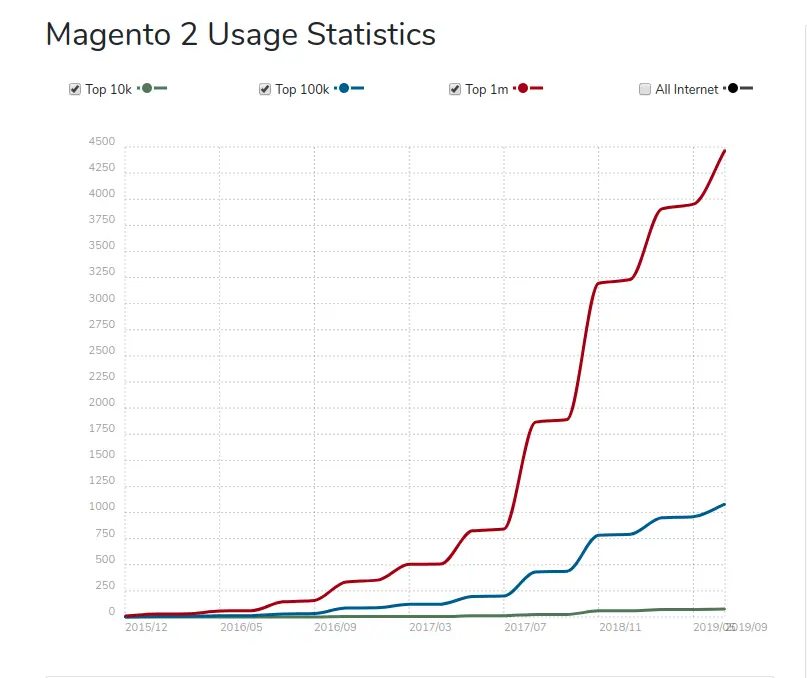
How’s the Performance and Loading Time?
Performance and loading time are crucial factors for any online business, impacting customer experience, conversion rates, and search engine visibility. With Magento 1, performance was a common concern, as its average page load speeds exceeded two seconds, often resulting in decreased conversion rates. According to Google, maintaining load times under two seconds is essential for optimal user experience in e-commerce.
Magento 1
Magento 1 faced criticism for its performance, with users experiencing slower page loading speeds compared to industry standards. The platform's architecture and coding practices contributed to these issues, leading to longer server response times and slower website performance overall.
Magento 2
Adobe Commerce, however, has addressed many of these performance issues by incorporating new technologies to enhance page loading speeds and reduce server response times. On average, Adobe Commerce boasts significant frontend performance improvements, with homepage and product pages loading considerably faster, and the checkout process being notably quicker compared to Magento 1.
Despite these advancements, additionally, optimizing site speed remains crucial for maximizing conversion rates and SEO effectiveness. Slow load times can hinder crawl efficiency, leading to fewer indexed pages by search engines. Additionally, the choice of hosting significantly impacts overall performance. While Adobe Commerce Cloud offers hosting as part of its package, other versions allow merchants to select their hosting provider, emphasizing the importance of choosing quality hosting for optimal performance.
How to Know the Time Has Come?
Well, official support for Magento 1 ended back in June 2020. This makes the need to migrate clear, but the principles behind platform upgrades remain critical. There are three questions to consider:
- Why do eCommerce solutions keep releasing new versions?
- How can you succeed with the outdated shopping cart?
- When is it better to upgrade: once YOU’re planning or when you’re HAVE NO OTHER CHOICE?
Let’s focus on these significant points. First of all, due to the open-source architecture new versions are inevitable for this eCommerce platform. This is the way the bugs could be fixed and improvements introduced, all the security matters covered. Answering the second question, needless to emphasize how fast technology is evolving and how much it’s going to cost you once clients exit your webpage because your site speed is too low or the product gallery lacks “cool” features the competitors already have. Once business success is what you are aimed at - you need a robust tool to manage it. And finally, speaking about the best time for the update, note that even if you turn to the automated upgrade, you will need some time launching the data transfer, checking its results, cope with design customizations, hosting issues, etc.
Magento 1 vs Adobe Commerce. Reasons Not to Postpone the Upgrade
Here are the most significant aspects where M1 and M2 differ. If you are considering making any changes to your store regarding any of these aspects you should seriously think over upgrading to the latest Adobe Commerce version as a part of those changes.
Performance
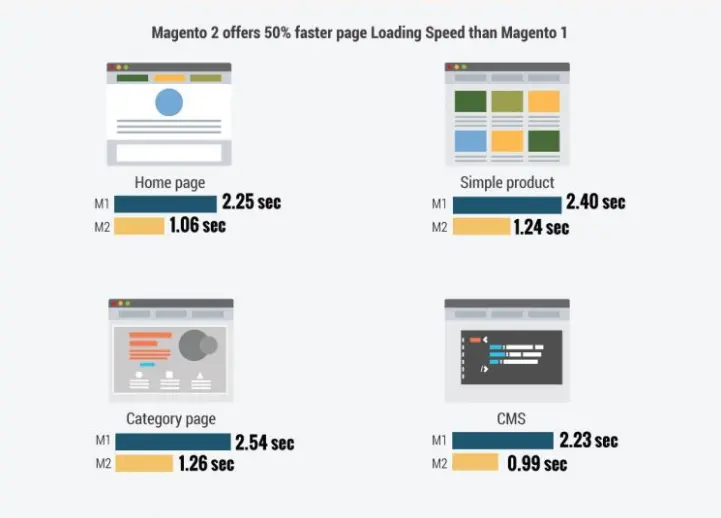
Website performance was among the top reasons the platform was redesigned. Modern Adobe Commerce versions are designed for enhanced speed, with pages loading significantly faster than its predecessor. The updated version can efficiently process a substantially higher volume of orders within an hour.
Once your business grows, you are expected to get more traffic and need a solution to be able to cope with the massive flow of visitors. Do you know that Modern Adobe Commerce versions can handle significantly more page views within an hour, far exceeding the capacity of Magento 1?
Web-store Management
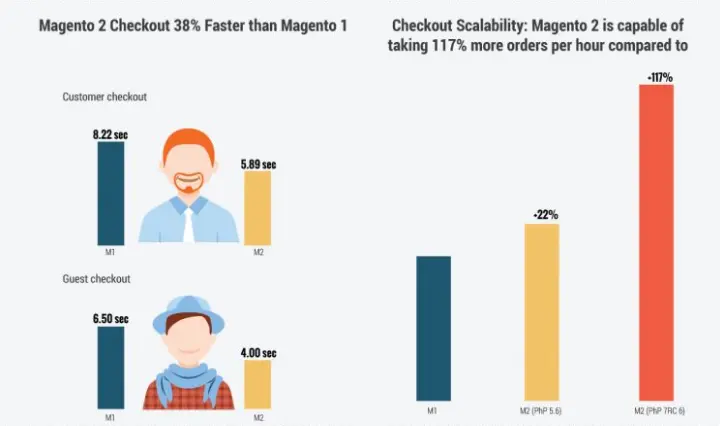
Once you feel that website administration might take less time, pay attention that with Adobe Commerce you get improved:
- Admin navigation,
- Product creation functionality,
- Data view and filtering,
- Administration for multiple users.
Excellent Customer Experience
What is the primary purpose of your webpage? Get customers’ interest, show all the products advantages and guarantee an easy way to create an order. With Adobe Commerce you get:
- Improved checkout (simplified registration, checkouts are included on every step, fewer forms to fill in, enhanced PayPal integration, order summary with products photos),
- Advanced SEO capabilities,
- Upgrades in mobile browsing. For tailored enhancements, consider our migration customization services.
To get more information on the benefits you get from updating your e-shop to the latest version, visit a comprehensive review of Adobe Commerce features.
Leave a Reply Cancel reply
Because the eCommerce solution leaves you to make the final decision when to upgrade the store only you with the team set a date for Magento to Magento migration into your business plan.
2 thoughts on "Magento 1 vs Magento 2: Evolution in E-commerce Platforms"
There is no one-click procedure to upgrade to Adobe Commerce. The software has a brand new architecture, thus, upgrade in its traditional way is impossible. It is rather a data migration across shopping carts. Cart2Cart service is exactly the tool to get the job done automatedly and with no business interruption.
What can we do for you?
Cart2Cart automated migration service has thousands of Magento upgrades on its count and offers error-free eCommerce entities import. 100% uptime for the current store is secured. Support Team is available 24/7 to provide you with any additional info you might need or assist you with any stage of the data transfer. Check our Magento Upgrade Guide to dive into further details and find out the best way to upgrade Magento.
With Adobe Commerce you get a total omnichannel platform with advanced functionality. Once you’re serious about your eCommerce business - think the benefits over and leap to Adobe Commerce.
How about Free Demo to see how the enhanced store will look like?
Monthly Update – December 2025
As we close out 2025, the e-commerce world continues its rapid transformation, with key trends shaping how businesses operate and grow. A major focus for merchants is leveraging AI and machine learning for hyper-personalization across the customer journey. This includes dynamic product recommendations, personalized content delivery, and tailored marketing campaigns, all designed to create a more engaging and relevant shopping experience. Businesses are increasingly adopting composable commerce architectures, moving away from monolithic platforms to integrate best-of-breed solutions for specific needs like advanced search, headless storefronts, and robust CRM systems. This modular approach offers unprecedented flexibility and scalability, allowing stores to quickly adapt to new technologies and evolving consumer expectations without a complete overhaul. For Adobe Commerce users, this means maximizing the platform's extensive API capabilities to connect with cutting-edge AI tools and specialized services, ensuring their online presence remains competitive and future-proof. Embracing these advanced integrations is vital for staying ahead in a crowded marketplace.
For more details, explore our FAQ section or schedule a call with a migration expert.

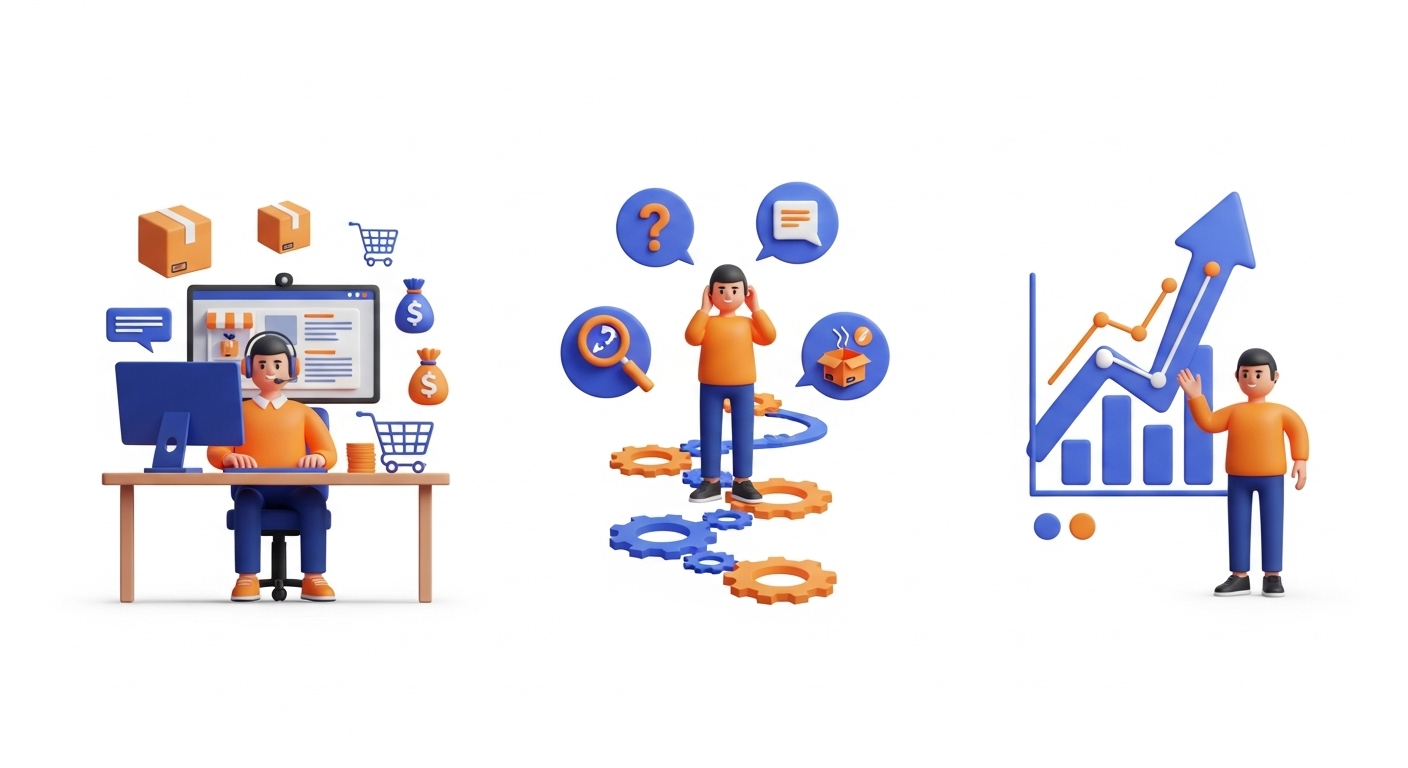




Comment by Iryna Kravchuk
Hi! There are many methods how to upgrade Magento 2. Thank you for mentioning two of them. Yet there is a risk of losing data when transferring data from Magento admin panel. Yes, using composer is an alternative, though it requires special technical skills. Cart2Cart service is a smart choice for those who want to save time, company’s budget and own efforts .Have you tried performing Demo Migration with us? You’ll see that it is a great option to upgrade Magento.
Comment by rohimic
One can upgrade magento 2 using the two basic methods, one is from admin panel and other is using composer.